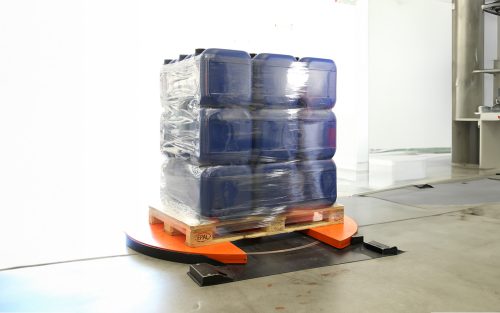
Our Know-How – Your Key to Success
Hints and Tips for the Application and Storage of Stretch Films
Do you have issues with the application? We are here to help!
Save time and wastage through optimized application
Have you experienced disruptions to your packaging processes? Do you often struggle with waste, such as damaged rolls or faulty wrapping
These challenges are not uncommon but the causes of these problems can be diverse.
From incorrect storage conditions to the incorrect settings on your stretch wrapper the reasons for a damaged roll or a flawed wrapping look are often not easy to identify. Helpful advice can save time and costs. That’s why we have compiled some tips for you to help with the most common problems.
Does this sound familiar to you?
Common Mistakes and Tips in the Processing of Stretch Films

A matter of weight
Did you know that the weight of the core can be crucial? We use only two core dimensions with weights of 1 kg or 1.6 kg. Other manufacturers may use heavier cores, leading to unnecessary costs. We can also offer completely coreless options. Discover Coreless now.

Bonding with the load carrier
To ensure optimal securing of the load ensure that the film and the load carrier are connected.

Ensure you’re on the right side
Problem with your film not sticking to the goods? Our stretch film has a sticky side which must always face the goods.

Details matter
ven the most modern wrapping machine and the best films fail if they are not perfectly matched. Ensure that the parameter settings are precisely tailored to the film and the goods being used.

The number of wraps is crucial
Your goods are securely packed only when the appropriate number of wraps is used. At the pallet base especially, this should be increased to prevent the goods from slipping.
Ensuring the Long-Term Quality of the Film
Through the right storage of your films, you can significantly reduce waste

In-House Storage
Store your film in-house and protect it from UV radiation, moisture, and other weather influences.

Climatic Conditions
The optimal temperature for storing our stretch films is between 10°C and 30°C, with a relative humidity of 25 to 60%.

Physical Conditions
Do not store our film for more than a year. To avoid external damage, do not stack more than 2 pallets on top of each other.
Do you have questions? We are happy to advise you!



